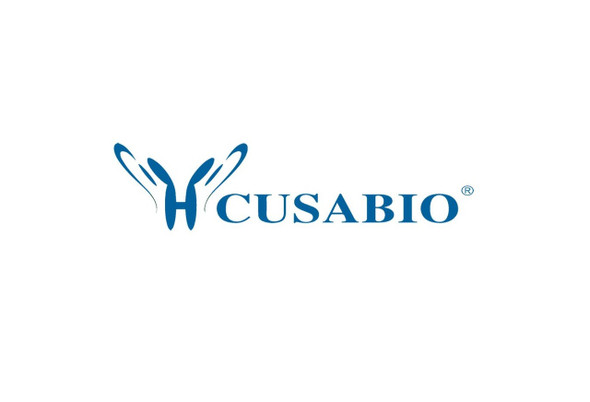Cusabio Active Proteins
Recombinant Human Transforming growth factor beta-1 proprotein (TGFB1), partial (Active) | CSB-AP003861HU
- SKU:
- CSB-AP003861HU
- Availability:
- 5 to 10 Working Days
Description
Recombinant Human Transforming growth factor beta-1 proprotein (TGFB1) ,partial (Active) | CSB-AP003861HU | Cusabio
Protein Description: Partial
Alternative Name (s) : Transforming Growth Factor Beta-1; TGF-Beta-1; Latency-Associated Peptide; LAP; TGFB1; TGFB
Gene Names: TGFB1
Research Areas: Cancer
Species: Homo sapiens (Human)
Source: Mammalian cell
Tag Info: Tag-Free
Expression Region: 279-390aa
Sequence Info: ALDTNYCFSSTEKNCCVRQLYIDFRKDLGWKWIHEPKGYHANFCLGPCPYIWSLDTQYSKVLALYNQHNPGASAAPCCVPQALEPLPIVYYVGRKPKVEQLSNMIVRSCKCS
Biological Activity: The ED50 as determined by its ability to inhibit the IL-4-dependent proliferation of TF-1 mouse T cells is less than 0.2 ng/ml
MW: 12.8 kDa
Purity: Greater than 95% as determined by SDS-PAGE.
Endotoxin: Less than 1.0 EU/µg as determined by LAL method.
Relevance: Transforming Growth Factor β-1 (TGFβ-1) is a secreted protein which belongs to the TGF-β family. TGFβ-1 is abundantly expressed in bone, articular cartilage and chondrocytes and is increased in osteoarthritis (OA) . TGFβ-1 performs many cellular functions, including the control of cell growth, cell proliferation, cell differentiation and apoptosis. The precursor is cleaved into a latency-associated peptide (LAP) and a mature TGFβ-1 peptide. TGFβ-1 may also form heterodimers with other TGFβ family members. It has been found that TGFβ-1 is frequently upregulated in tumor cells. Mutations in this gene results in Camurati-Engelmann disease.
PubMed ID:
Notes: Repeated freezing and thawing is not recommended. Store working aliquots at 4℃ for up to one week.
Function: Multifunctional protein that controls proliferation, differentiation and other functions in many cell types. Many cells synthesize TGFB1 and have specific receptors for it. It positively and negatively regulates many other growth factors. It plays an important role in bone remodeling as it is a potent stimulator of osteoblastic bone formation, causing chemotaxis, proliferation and differentiation in committed osteoblasts (By similarity) . Stimulates sustained production of collagen through the activation of CREB3L1 by regulated intramembrane proteolysis (RIP)
Involvement in disease: Camurati-Engelmann disease (CAEND)
Subcellular Location: Secreted, extracellular space, extracellular matrix
Protein Families: TGF-beta family
Tissue Specificity: Highly expressed in bone. Abundantly expressed in articular cartilage and chondrocytes and is increased in osteoarthritis (OA) . Colocalizes with ASPN in chondrocytes within OA lesions of articular cartilage.
Paythway: Hipposignalingpathway
Form: Lyophilized powder
Buffer: Lyophilized from a 0.2 μm filtered 50mM Glycine-HCl, 150mMNacl, pH2.5
Reconstitution: We recommend that this vial be briefly centrifuged prior to opening to bring the contents to the bottom. Please reconstitute protein in deionized sterile water to a concentration of 0.1-1.0 mg/mL.We recommend to add 5-50% of glycerol (final concentration) and aliquot for long-term storage at -20℃/-80℃. Our default final concentration of glycerol is 50%. Customers could use it as reference.
Uniprot ID: P01137
Uniprot Entry Name:
HGNC Database Link: HGNC
UniGene Database Link: UniGene
KEGG Database Link: KEGG
STRING Database Link: STRING
OMIM Database Link: OMIM









